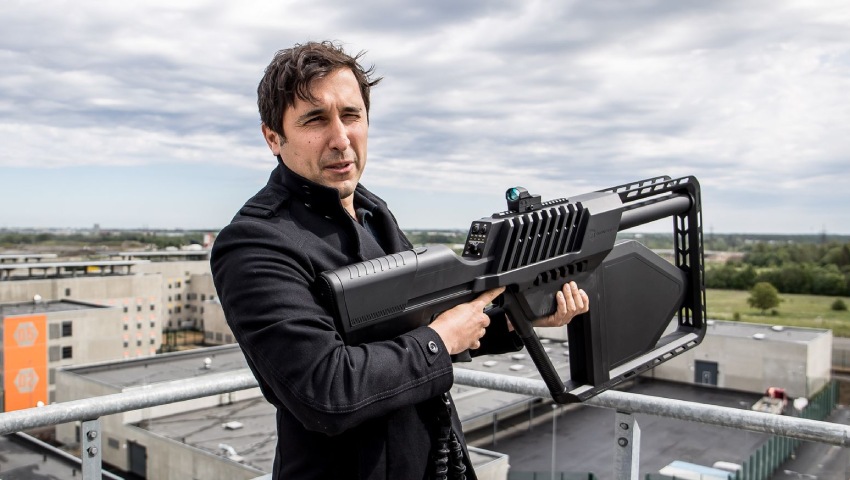Oleg Vornik, CEO of DroneShield, weighs in on the Commonwealth government’s defence industry revitalisation plan.
To continue reading the rest of this article, please log in.
Create free account to get unlimited news articles and more!
Australia is in the middle of a precedented defence spend boom. At over 2 per cent of GDP and rising, over $250 billion will be poured into “capability investment” over next 10 years by the federal government, covering a broad suite of military domains across both acquisitions ($220 billion) and future sustainment ($50 billion).
Much focus has been on how much of this can be invested locally, nurturing and growing the Australian defence industry along the way. Defence primes are being asked to explain the local content in their bids, and are being held to their commitments; most recently the Australian government stance with Naval Group on SEA 1000 (Attack Class Future Submarines).
Growing the local defence industry relies on several factors, in addition to customer demand from the Commonwealth.
A key factor is obviously funding. Australia has an expanding funding ecosystem, with a variety of angel investors, venture funds, private equity, and the ASX itself providing clear opportunities for companies with a clear path to growth.
The market for ideas that solve complex problems isn’t restricted to our borders either, with many Australian companies successfully attracting interest from the US and beyond recently.
Another factor is highly skilled and highly trained engineers. Much has been reported on STEM education shortages, especially at secondary education level – and attracting and retaining STEM teachers is critical. Australian universities are among the best in the world, both for research and teaching. We are great at tertiary education, for our own citizens and as an export to the world.
However, the bottleneck starts straight after graduation. It’s a case of chicken and egg, with a shortage in skilled engineers constraining the scale of the local industry, which in turn constrains the volume of opportunities available for those in the early stages of their engineering careers who are being asked to work on cutting-edge problems as part of their professional development.
To paraphrase Elon Musk’s recent rant about MBAs, MBAs won’t protect our national interests, but complex problem-solving will.
Australia and US are a case study of contrasts, where we provide a more egalitarian, higher quality university and tertiary education, with the US then easily taking the lead on technology innovation due to its rich ecosystem of complex engineering training.
To make things worse, we often glamourise the wrong technology. The fintechs and SaaS giants of Australia have been great contributors to our economy and engineering talent. But we need to foster more than just app developers and coders for chatroom software.
There must be increased emphasis on developing engineers that build and program circuit boards, design complex antenna waveforms, and architect and manufacture high-tech products.
As the looming semiconductor shortage in Taiwan has shown, it’s not about textbook “economies of specialisation” where we can afford to pick an area of excellence and import the rest. In uncertain economic times, we need to become self-reliant in areas of national strategic importance. And this starts with nurturing high-tech engineering.
How do we start?
For one, defence primes need to subcontract and train local industry in high-tech – not only welding, metal bending, and basic civil engineering. Real high-tech skills transfer matters. Providing sheets of steel for a tank or building barracks locally is all well and good, but what about complex electronics, mission guidance systems, sensors and other high tech items.
Second, more direct procurement by the Commonwealth to local SMEs for complex research and development (R&D) projects, taking companies past “Gate Zero” of capability, and supporting them to operate at global best practices in their work with Australian Defence.
Thirdly, we need to nurture our own sovereign defence champion – an Australian defence company with scale, depth of supply chain and diverse capabilities. This doesn’t need to be a “build only to be sold overseas” situation – that is what our Foreign Investment Review Board (FIRB) regime is for.
At the end of the day, we only have ourselves when the drawbridge goes up, and preparation must begin now for what might come should current grey zone warfare expand past the increasing cyber and information threats of late. Our allies will help best they can, but their own priorities will always, naturally, come first.
If that’s the ambition, it starts with bolstering local talent and innovation by growing our defence ecosystem and the skills of Australians through real life complex problem-solving at occupational level.
Oleg Vornik is CEO of Australian listed company DroneShield, which specialises in RF sensing, AI and machine learning, sensor fusion, electronic warfare, rapid prototyping and MIL-SPEC manufacturing.

 Login
Login







